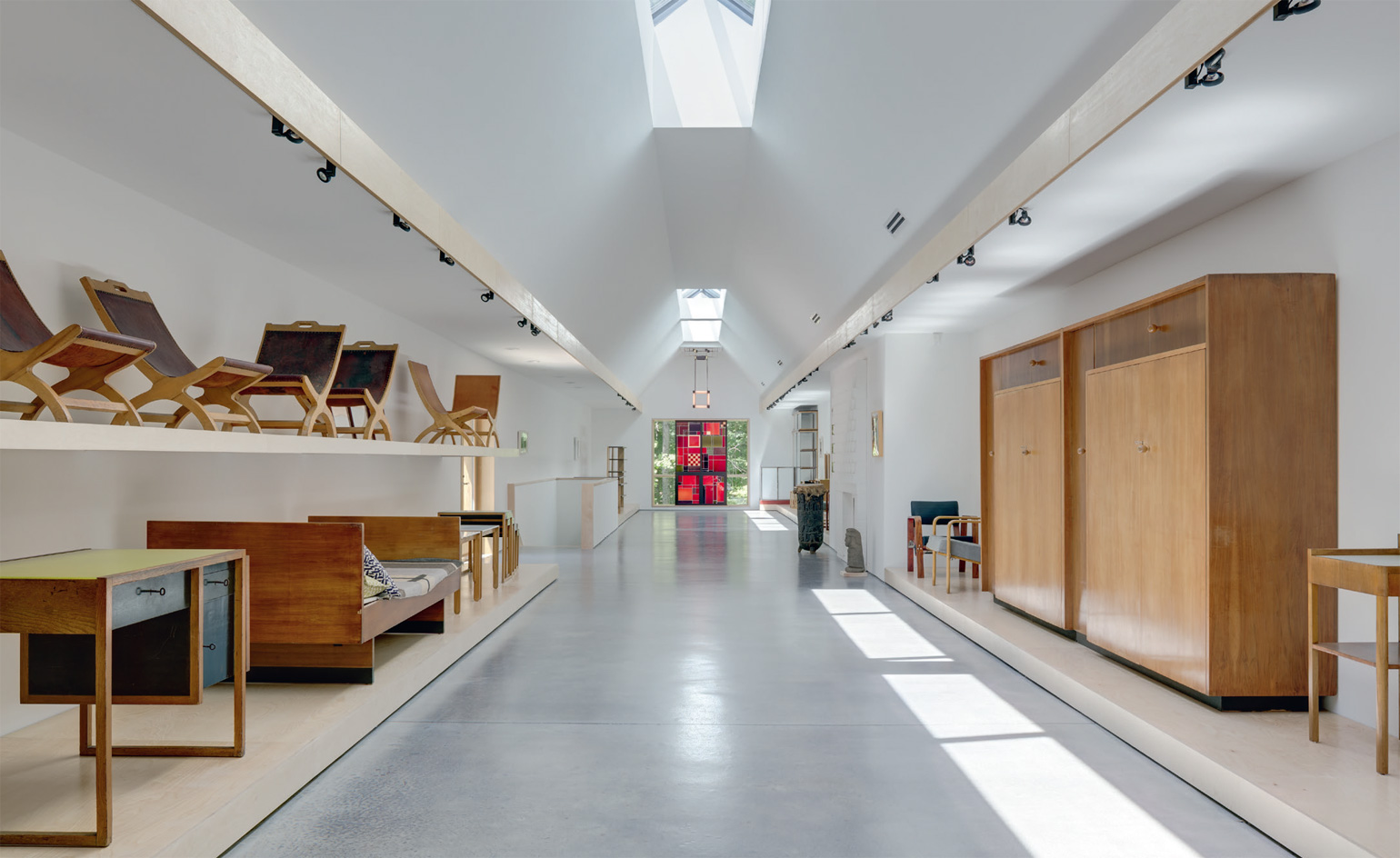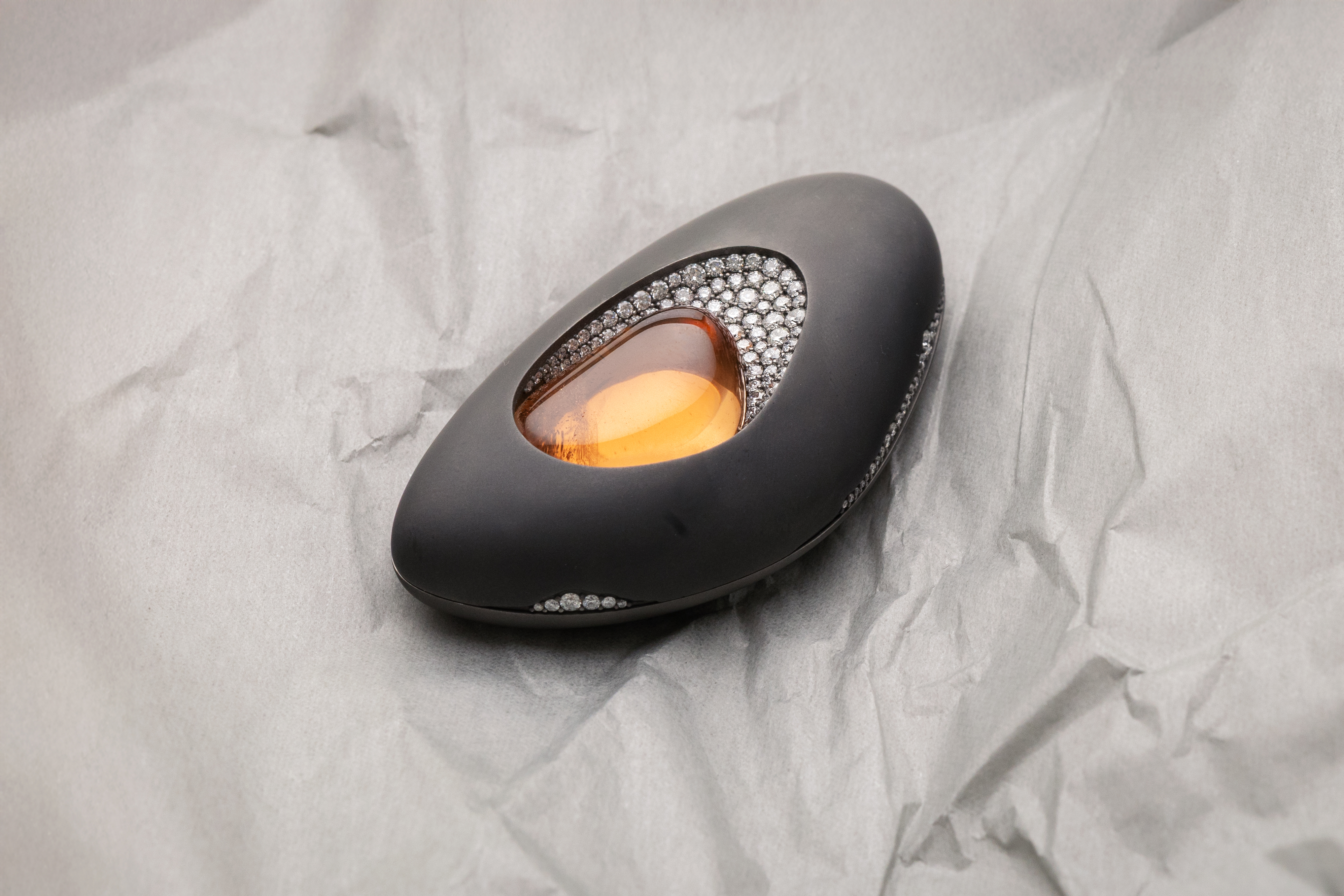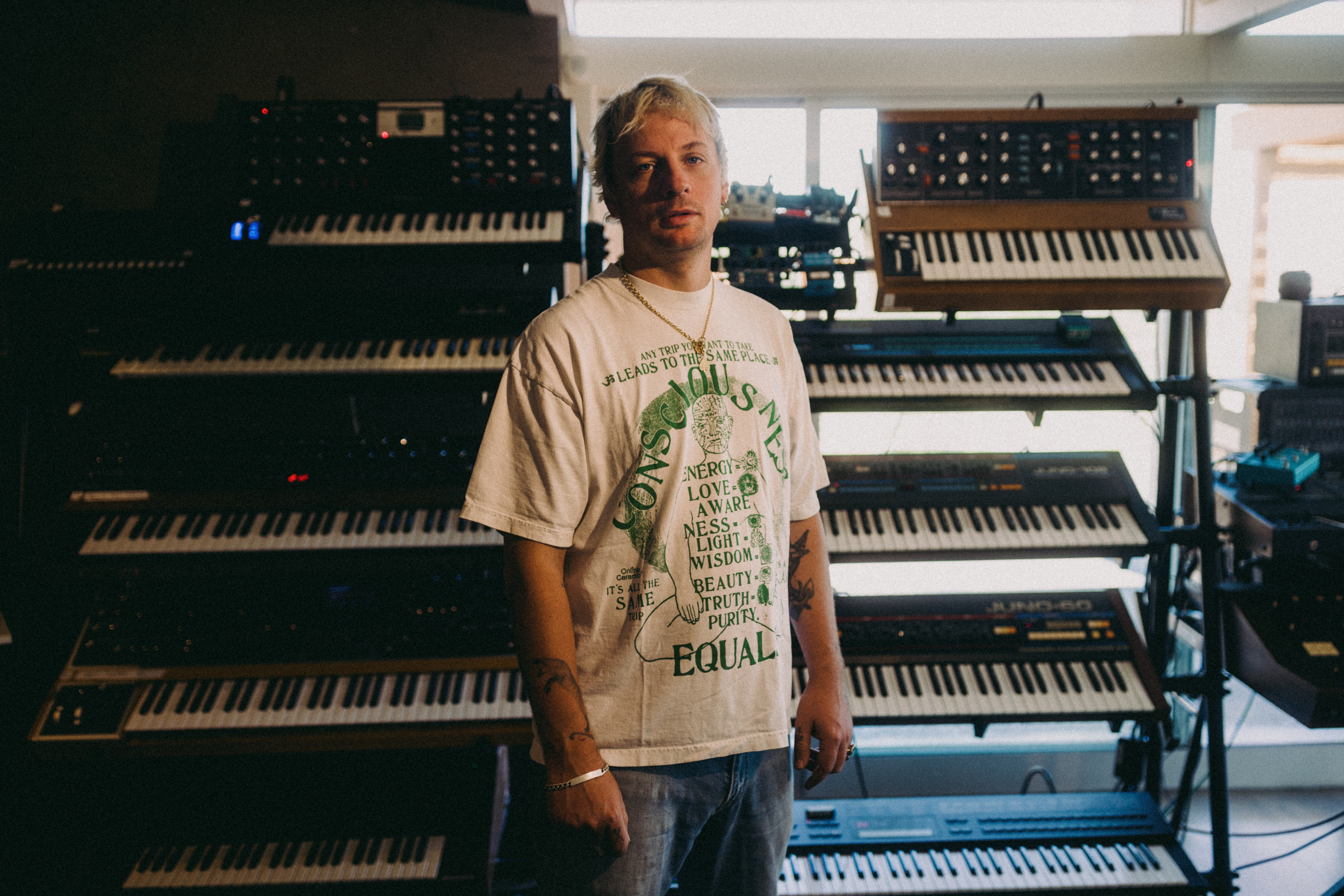Dream haus: a new gallery in Connecticut showcases the visionary work of Josef and Anni Albers
A new gallery in Connecticut showcases the visionary work of Josef and Anni Albers

The Josef and Anni Albers Foundation in Bethany is one of Connecticut's best-kept secrets. Nestled in the woods, it's a magnet for pilgrims of the Bauhaus keen to learn more about the German émigrés who were among the school's most inspiring teachers. Featuring paintings, furniture and textiles produced by the pair throughout their long careers, the foundation has now put on permanent display never-seen-before furniture and textiles, accumulated over the past 40 years.
They appear in a new, barn-like building designed by Irish architect Eoghan Hoare, in collaboration with local architect of record Hunter Smith and Albers foundation artist and facilities manager, Fritz Horstman, a stone's throw from the foundation's headquarters. The existing campus includes a library, archives and studios for visiting artists, all designed by one of Albers' former students, Tim Prentice, and his partner Lo-Yi Chan. The new 3,000 sq ft space is christened Trunk, in honour of Trunck & Co, the Berlin-based furniture business owned by Anni's father. When Anni died in 1994, the company was sold and the proceeds enabled the foundation's director Nicholas Fox Weber to purchase the 75-acre site near where the Alberses had lived and set about preserving their legacy.
Weber called upon Hoare, a young graduate, after meeting him at a dinner party in Ireland. 'Josef was the son of a builder/maker and craftsmanship was very important to him. If he had to pick between an Armani-clad architect espousing theories about dialectics, or one who had his sleeves rolled up and a hammer in his hand, you know where he would have turned,' says Weber. Hoare, who has made furniture with master craftsmen in rural Japan and built kindergartens in Borneo, got the job. It was a very interesting brief as it wasn't to be an exhibition space, nor a storage space, it had to be a combination', he says. 'Both functional and well-finished.'
Hoare based his design on the tobacco barns that dot this part of New England. He battled poison ivy and freezing winter temperatures to clear the site that would become a gallery, showroom and education centre, open by appointment only to curators, manufacturers and students. 'Galleries and museums can come and select pieces for shows, so the building is very much designed around the function of storing, moving and acclimatising pieces,' says Hoare.
Almost 40 works make up the display. Some, such as a reproduction fireplace made for a private house in Connecticut, have not been seen since they were put into storage after the 'Josef and Anni Albers: Designs for Living' exhibition at the Cooper Hewitt Museum in 2007. Others are acquisitions from the estate of Fritz and Anno Moellenhof, émigré friends of the Alberses. Both couples fled from Germany to North Carolina, and from 1933 to 1949, Josef taught at Black Mountain College. At the same time, he designed stacking tables, desks, beds, armchairs and ottomans for the Moellenhofs, along with his masterpiece - a dining room console that is at The Art Institute of Chicago.
All were made at Trunck & Co. Ten of Anni's woven tapestries and around 20 of her textiles are here too, among them pieces she made for the architect Philip Johnson (a lifelong friend, he helped the Alberses emigrate to the US in 1933), as well as newer designs now manufactured by Sunar, Knoll and Maharam. A highlight is the Director's Waiting Room, a replica of a waiting room that Josef designed for outside Walter Gropius' office at the Bauhaus in Weimar in 1923. Josef was put in charge of the school's glass workshop in 1922, the year Anni enrolled as a student. A row of seats, a light, a stained glass window, bookshelves, a corner cabinet and table that made up the original space have been reproduced exactly, over ten years, by Berlin-based carpenter Justus Binroth.
'It is tranquil, correct and workman-like, all values Josef believed in,' says Weber. At the other end of the building is a reproduction of his frst stained glass window, created in 1918 for St Michael's Church in his hometown of Bottrop, Germany (pictured on this issue's Contents, page 052). 'Getting all these works back on display was long overdue,' says Weber.
By the 1960s, a string of professorships, teaching posts and shows across the US had led the Alberses to be seen as creative royalty. Charles and Ray Eames were friends, as was Johnson. But despite rubbing shoulders with Mies van der Rohe, Le Corbusier and Frank Lloyd Wright, Josef didn't believe in architect-built houses. 'He said none of them, with their flat roofs, knew how to build in Connecticut,' says Weber. Instead, the couple lived in New Haven in a plain house where Josef worked in the basement, Anni upstairs. 'Visitors, including myself, were shocked by how unsightly it was,' he adds.
Weber first met the Alberses in 1970 when he was doing a master's in art history at Yale. Fifty years Anni's junior, he became a lifelong friend to the couple, and stayed close after Josef died in 1976. Weber's acquisition of the couple's works and preservation of their legacy has been tireless and fruitful. In February, a new Albers Foundation opened in Senegal in the remote village of Sinthian (see W*194). In October, a show of their collection of pre-Columbian objects, assembled during sabbaticals in Mexico, will open at Mudec Museo delle Culture in Milan. (It was in Mexico in 1947 that Josef began painting the Variant series, which evokes the domestic adobe architecture of the country, and Anni created her La Luz series of textiles.) The exhibition includes paintings, textiles, drawings, sculptures, lithographs and more than 20 photographs and photo-collages that have never been seen before.
Manufacturers, too, have been scouting around Trunk. Weber plans to have many of these newly visible Albers pieces put into production, alongside classics such as the nesting tables, produced by Ameico. 'His furniture is beautiful, comforting and functional. Josef understood proportion and materials better than anyone. We want to get it right.'

The project was designed by architect Eoghan Hoare

In the gallery, Josef Albers’ Butaque chairs inspired by designer Clara Porset, 1927 desk, bed and armoire, and a reproduction of a 1922 stained-glass window.

Josef Albers’ Mexican chairs, 1940, and framed sketches of the design; tea tables in ash veneer and milk glass, 1928; and the iconic 1927 nesting tables in ash veneer, black lacquer and painted glass.

A reproduction of the seating designed by Josef Albers for Walter Gropius’ waiting room at the Bauhaus in Weimar

A reproduction of the brick fireplace designed by Josef Albers for the Rouse house in New Haven, Connecticut, built by his architect friend and Yale professor King-Lui Wu.

Ascension, part of Josef’s 1942 graphic tectonic series, with a 1950s Japanese vase by Chikuho, and two of Anni’s weaving boat shuttles.
INFORMATION
’A Beautiful Confuence: Anni and Josef Albers and the Latin American World’
28 October 2015 - 21 February 2016
At Mudec Museo delle Culture, Milan
Receive our daily digest of inspiration, escapism and design stories from around the world direct to your inbox.
Emma O'Kelly is a freelance journalist and author based in London. Her books include Sauna: The Power of Deep Heat and she is currently working on a UK guide to wild saunas, due to be published in 2025.
-
 Fulham FC’s new Riverside Stand by Populous reshapes the match-day experience and beyond
Fulham FC’s new Riverside Stand by Populous reshapes the match-day experience and beyondPopulous has transformed Fulham FC’s image with a glamorous new stand, part of its mission to create the next generation of entertainment architecture, from London to Rome and Riyadh
-
 A contemporary Mexican hotel emerges from a 16th-century ruin in Mérida
A contemporary Mexican hotel emerges from a 16th-century ruin in MéridaA renovation project by Zeller & Moye, Mérida’s new Hotel Sevilla wears its architectural interventions lightly, mixing new brutalist elements into listed interiors and a palm-filled courtyard
-
 Discover the cool and offbeat designs of jeweller Inesa Kovalova
Discover the cool and offbeat designs of jeweller Inesa KovalovaInesa Kovalova's jewellery celebrates a mix of mediums and materials
-
 Nadia Lee Cohen distils a distant American memory into an unflinching new photo book
Nadia Lee Cohen distils a distant American memory into an unflinching new photo book‘Holy Ohio’ documents the British photographer and filmmaker’s personal journey as she reconnects with distant family and her earliest American memories
-
 Ed Ruscha’s foray into chocolate is sweet, smart and very American
Ed Ruscha’s foray into chocolate is sweet, smart and very AmericanArt and chocolate combine deliciously in ‘Made in California’, a project from the artist with andSons Chocolatiers
-
 Jamel Shabazz’s photographs are a love letter to Prospect Park
Jamel Shabazz’s photographs are a love letter to Prospect ParkIn a new book, ‘Prospect Park: Photographs of a Brooklyn Oasis, 1980 to 2025’, Jamel Shabazz discovers a warmer side of human nature
-
 The Hammer Museum in Los Angeles launches the seventh iteration of its highly anticipated artist biennial
The Hammer Museum in Los Angeles launches the seventh iteration of its highly anticipated artist biennialOne of the gallery's flagship exhibitions, Made in LA showcases the breadth and depth of the city's contemporary art scene
-
 Thomas Prior’s photography captures the uncanny fragility of American life
Thomas Prior’s photography captures the uncanny fragility of American lifeA new book unites two decades of the photographer’s piercing, uneasy work
-
 Central Park’s revitalised Delacorte Theater gears up for a new future
Central Park’s revitalised Delacorte Theater gears up for a new futureEnnead Architects helmed an ambitious renovation process that has given the New York City cultural landmark a vibrant and more accessible future
-
 Stephen Prina borrows from pop, classical and modern music: now MoMA pays tribute to his performance work
Stephen Prina borrows from pop, classical and modern music: now MoMA pays tribute to his performance work‘Stephen Prina: A Lick and a Promise’ recalls the artist, musician, and composer’s performances, and is presented throughout MoMA. Prina tells us more
-
 Curtains up, Kid Harpoon rethinks the sound of Broadway production ‘Art’
Curtains up, Kid Harpoon rethinks the sound of Broadway production ‘Art’He’s crafted hits with Harry Styles and Miley Cyrus; now songwriter and producer Kid Harpoon (aka Tom Hull) tells us about composing the music for the new, all-star Broadway revival of Yasmina Reza’s play ‘Art’